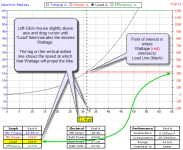Hi
I'm thinking about buying a bike with a Bofeili crank drive and a 36V 8,8 Ah battery (bottle with samsung cells).
How do I calculate/estimate the top speed without pedalling, light pedalling and heavy pedalling? Wheel size is 26 inch and I weigh 78 kg / 171 pounds. The supplier tells me it can reech speeds of up to 40km/h with light pedalling... that seems fast for a 36v bike...
I've recieved the following motor scheme from the supplier:

I'm thinking about buying a bike with a Bofeili crank drive and a 36V 8,8 Ah battery (bottle with samsung cells).
How do I calculate/estimate the top speed without pedalling, light pedalling and heavy pedalling? Wheel size is 26 inch and I weigh 78 kg / 171 pounds. The supplier tells me it can reech speeds of up to 40km/h with light pedalling... that seems fast for a 36v bike...
I've recieved the following motor scheme from the supplier:




